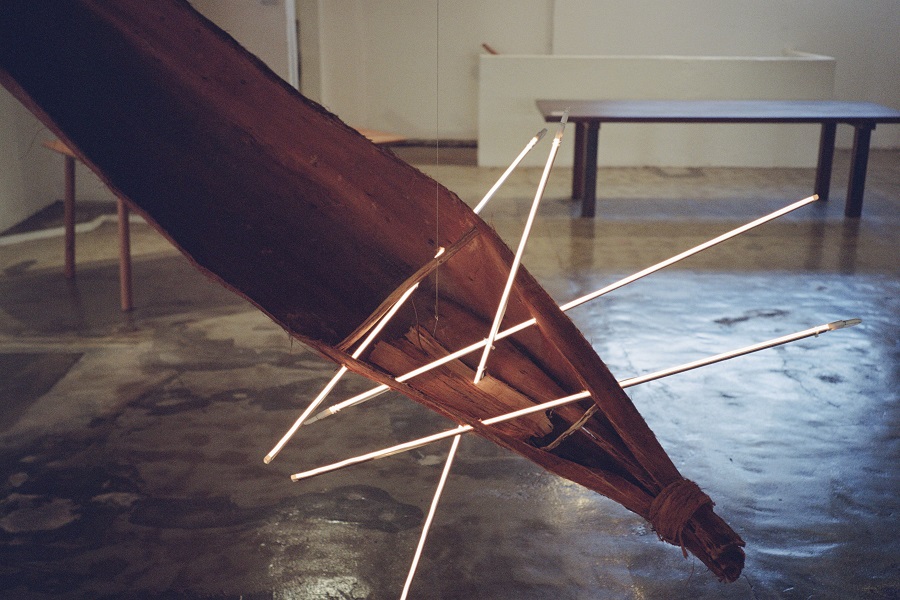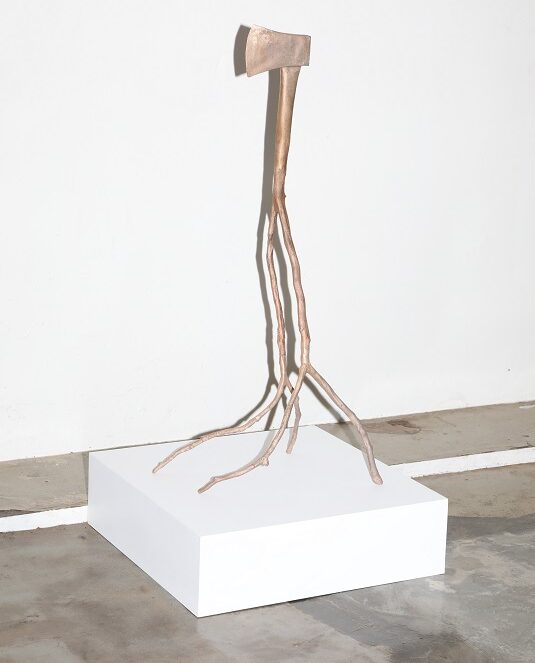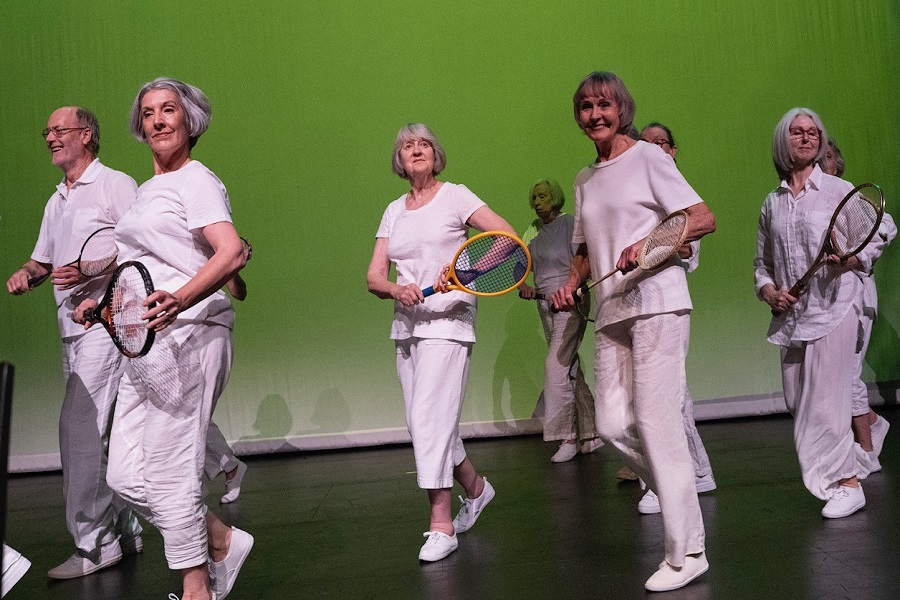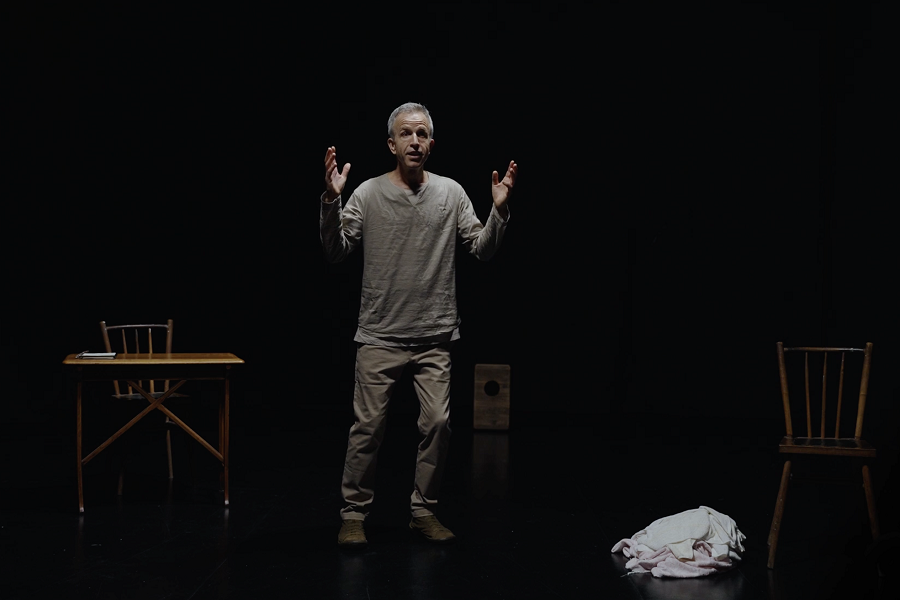
Visual art / Pop Songs in the Desert, curated by Tegan Garnett. At the Mixing Room Gallery, Fyshwick, until October 26. Reviewed by SOPHIA HALLOWAY.
While producing the 2024 Canberra Art Biennial, inaugural creative producer Tegan Garnett was conflicted about the seemingly indulgent nature of art during the fraught political landscape of this year.
Garnett recalls a poem by German playwright Bertolt Brecht, To Those Born After. Brecht wrote in 1938:
What kind of times are these
When it’s almost a crime to talk about trees
Because it implies silence about so many horrors?
Nearly a century after Brecht wrote this, his words carry a continued significance. Talk of trees, seemingly trivial during Brecht’s time, takes on a new urgency amidst a climate crisis as some of us grapple with the world we are leaving to those born after us. In 2024, Garnett transposes Brecht’s trees with art.
To unpack this conflict, Garnett invited artists Aidan Hartshorn, Caro Pattle, Jacqueline Bradley, Jenna Lee, Kirstie Rea, Luke Chiswell and Nell to present works about trees at the Mixing Room Gallery.
The venue itself ties into Garnett’s thematic, situated above the timber recyclery at Thor’s Hammer in Fyshwick. The gallery is essentially a showroom, with the exhibition interspersed by functional timber objects and furniture. Pop Songs in the Desert presents work in the context of the full life cycle of its subject, the tree. Like the outdoor works included in the Biennial, Garnett’s chosen venue has a site-specific quality.

My visit starts with a slight hiccup – the gallery opens at 10am, not 9am as stated on the exhibition webpage. A small detail, but an important one given the growing geographical reach of the Biennial, which this year takes place across 20 different venues. There is a considerable amount of co-ordination involved to reach every site over the Biennial’s four week run, especially for punters visiting on weekends only.
Founder Neil Hobbs has stated in interviews that the Biennial could develop in the direction of European biennials, which run over months, rather than weeks. An extended run would allow for a deeper and more leisurely engagement.
Fortunately, Pop Songs in the Desert was worth the wait.
Some artists approach their remit conceptually, such as Luke Chiswell’s Self-sabotage, a cast bronze sculpture of branches that evolve into the head of an axe. The tree is transformed into the very object that will destroy it. Chiswell meditates on humanity’s mutual dependence on, and destruction of, nature.
Other artists realise the concept materially, such as Aiden Hartshorn’s Madhawu Yiri (Heavy Light), a murrin (bark canoe) produced by Hartshorn using traditional techniques taught to him by his father. The canoe is impaled by LED rods. Hartshorn examines the cultural and environmental impact wrought by the production of electrical energy from Australia’s high country water systems, such as the Snowy Hydro.

A highlight is Jenna (Mayilema) Lee’s meticulously crafted Grasstrees, a corrective to damaging misrepresentations of indigenous languages in the century-old text Aboriginal Native Words and Their Meanings. The “scholarship” in this text has been reproduced and reprinted in the decades since, reinforcing harmful stereotypes that persist today. Lee sculpts the very pages of this text into Xanthorrhoea, a fire-resistant grass tree which thrives in a cycle of constant renewal. Lee’s Grasstrees reclaim language and speak to the resiliency and power of indigenous culture.
An exhibition about trees casts a wide net and could risk becoming too disparate. However, in the context of the site and through Garnett’s strong selection of artists, Pop Songs in the Desert demonstrates the value of art in communicating the most pressing issues of our times.
Who can be trusted?
In a world of spin and confusion, there’s never been a more important time to support independent journalism in Canberra.
If you trust our work online and want to enforce the power of independent voices, I invite you to make a small contribution.
Every dollar of support is invested back into our journalism to help keep citynews.com.au strong and free.
Thank you,
Ian Meikle, editor




Leave a Reply